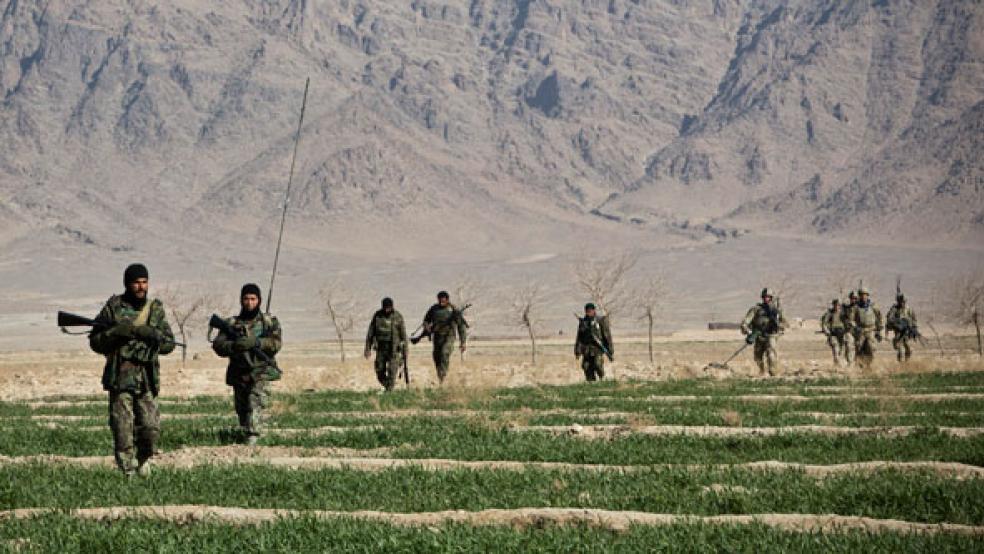House lawmakers next week begin marking up the annual defense policy bill. The only problem is that the Pentagon hasn’t said how many U.S. troops will remain in Afghanistan, and how much it will cost to keep them there.
The Obama administration has yet to submit its war funding request to Congress, even though the rest of the budget proposal was announced in early March. For now, the White House has said lawmakers should use $79.4 billion as a placeholder, the same amount as this year’s overseas funding amount, and presumably one that will change depending on how many U.S. service members stay in Afghanistan after 2014.
Related: America’s Ugly Win in Afghanistan
While the Pentagon has yet to announce its preferred force level, defense officials are considering three troop scenarios – 10,000 or 5,000 or zero – according to Bloomberg News. At the beginning of the year there were about 38,000 U.S. service members in Afghanistan.
“If they decide to go with zero, you would still have to fund the removal of equipment,” said Diem Salmon, senior policy analyst for defense budgeting at the Washington-based Heritage Foundation.
Even though President Hamid Karzai hasn’t signed a security agreement with the U.S. allowing for continued troop presence beyond 2014, the top two candidates to succeed him have each said they plan to sign it.
Any troop presence would come with a fixed cost of $15 billion to $20 billion a year, according to Todd Harrison, a senior fellow at the Center for Strategic and Budgetary Assessments.
Related: We’re One Step Closer to Robots on the Battlefield
Last year he authored a report showing that the cost per service member in Afghanistan would be $2.1 million in 2014, up from an average of $1.3 million in fiscal years 2008 through 2013. The same study found that while troop levels were expected to drop by 39 percent in 2014, compared with the previous year, funding would decline by only 10 percent.
“It’s not going to be directly proportional,” Salmon said, in part because “there’s been a greater amount of base funding that’s going into war funding.” Base spending typically applies to domestic and day-to-day programs, as opposed to war dollars for places like Afghanistan and Iraq.
The House Armed Services Committee meets next week to craft the National Defense Authorization Act for fiscal 2015, which begins on Oct. 1. Congress has passed a defense authorization bill for each of the past 52 years.
Related: Ukrainian PM: We Can’t Stop Russia Alone
The delay is also complicating the annual spending bills. The House Appropriations Committee, which has already approved a handful of funding measures for next year, says it can’t move forward with its defense bill until the Pentagon provides clarity on U.S. needs in Afghanistan next year.
Another reason why lawmakers are waiting for the war funding request is because it will allow them to shift some otherwise reduced or eliminated programs from the base budget to the war budget, which isn’t subject to the budget spending caps.
“Members of Congress like to talk about deficit reduction and cutting spending, but those spending cuts actually force some difficult choices at the Pentagon,” Harrison said. “This is a convenient loophole to avoid some of those difficult choices.”
Top Reads from The Fiscal Times:





